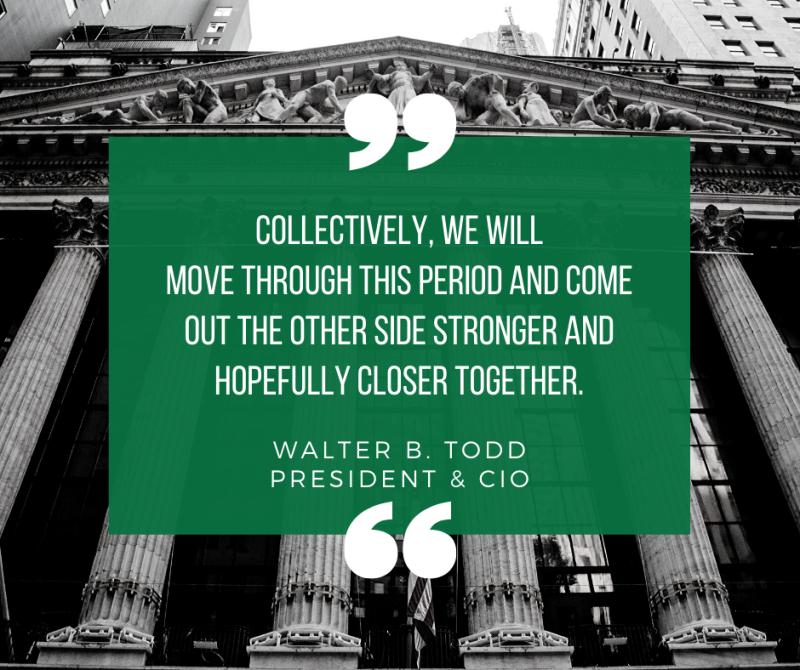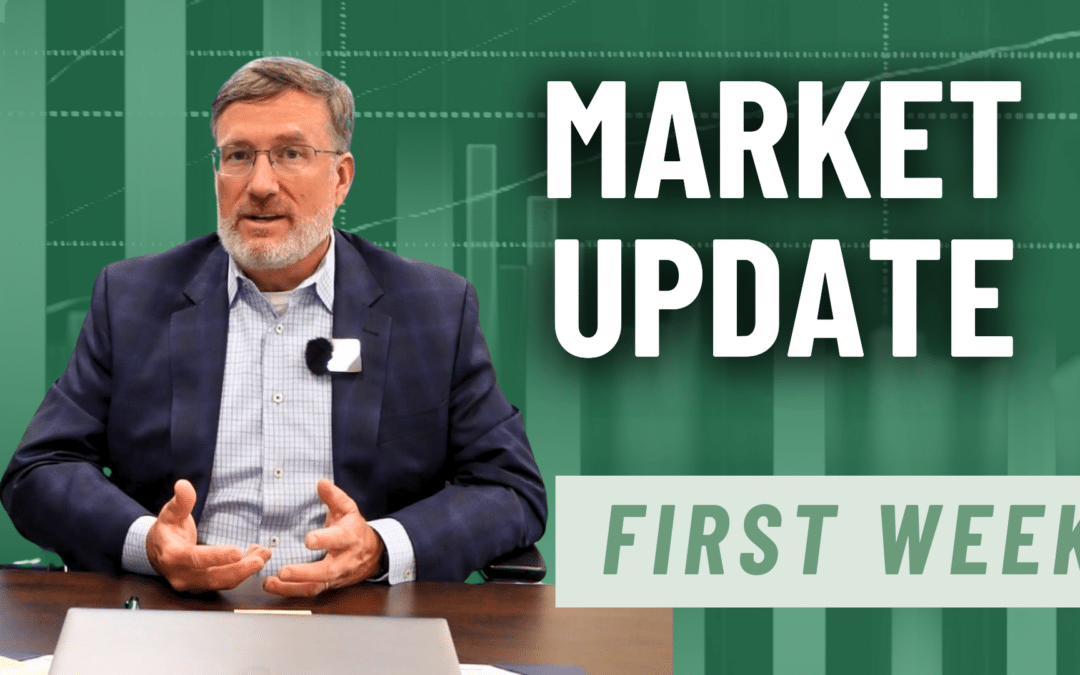Economic Outlook
By Dr. John McAlhany
The third quarter ended with a similar level of uncertainty about the strength of the economy as existed earlier in the year. The final report on the economy for the second quarter confirmed what was expected. The US economy experienced a severe recession. The growth in the economy, as measured by GDP, collapsed at an annual rate of 31.7% in the second quarter, by far the worst quarterly contraction since such recordkeeping began in 1947.
There is widespread speculation around how long the recession will last. If one quarter of positive growth is enough, then our economy is recovering. Economists at Bank of America estimate that GDP growth in the third quarter could be as high as 27% when reported later this month. Fueled by the tremendous amount of aid provided by the Federal Reserve (Fed) and Congress, consumer and business spending have bounced back. Yet the economy is nowhere near the levels it achieved prior to the virus.
Housing has been a big contributor to the rebound. As a major asset of consumers, it directly benefits consumer confidence and spending. Spurred by ultra-low interest rates, buyers are snapping up a limited supply of homes. Home purchases jumped by a record 24.7% in July and are currently over 10% higher than they were a year ago. Home prices are also 3.9% higher. Even with the strength in housing and a modest improvement in retail sales, unemployment remains at a recessionary level.
While high, the jobless rate is falling. At the height of the pandemic in April, the unemployment rate was 14.8%. Currently, the unemployment rate is 7.9%, slightly better than the 8.2% in August. About half of the 22 million jobs lost to the coronavirus have been recovered, but hiring is on a sluggish upward path. Businesses added only 661,000 jobs in September, well below the 1.4 million added in August. Businesses are reluctant to add employees and many jobs have likely been permanently lost. However, positive trends in employment should continue as half of private sector jobs are in services such as retail, restaurants, healthcare, hotels, and casinos which are still reopening. Hopefully, the current resurgence in the virus will not be severe enough to cause a major round of closures.
While an economic recovery is occurring, the path of future growth is still uncertain. In a statement following the recent meeting of the Fed, Chairman Powell acknowledged that the pandemic “will weigh heavily on economic activity, employment and inflation,” and that “the path of the economy will depend significantly on the course of the virus.” Recognizing the uncertainty, Chairman Powell said, “A full recovery is unlikely until people are confident that it is safe to engage in a broad range of activities.” A recent report on consumer confidence did show improvement, but it is still well below pre-virus levels.
The uncertainty about when the healthcare crisis will improve has complicated the Fed’s interest rate policy. A long-standing practice has been to raise interest rates when the unemployment rate has fallen to a level that might ignite inflation. Their current thinking is that low unemployment and rising wages do not necessarily cause inflation. The Fed, at their recent meeting, decided that in the current economic environment they will keep interest rates near zero into 2023 and if necessary, allow inflation to overshoot their 2% target. The Fed will also continue a monthly purchase of $120 billion of treasury and mortgage bonds, providing additional liquidity for the economy. A new round of stimulus spending by Congress would also help.
The economy has begun to recover from the recession, but we face uncertain times over the next year or so. A slower pace of the spread of the virus and finding a vaccine are crucial to our recovery. While we are confident that the economy will continue to improve, volatility will remain in the pace of the recovery and in the financial markets. This is especially true for the next few quarters given the upcoming election, the Supreme Court appointment, and the speculation of when will we have a vaccine. Stay positive and stay healthy.
The Stock Market
By Walter Todd
3588. No this is not a prediction of the year the world will end. This is the high the S&P 500 hit on September 2, 2020. A new, all-time high. Wait, what? We have talked here internally, that even if you had been given perfect information about the future course of events at the beginning of the year, you could not have predicted this would occur during 2020. From the bottom on March 23 to that peak, the S&P 500 had risen 63.7%. Not in a straight line, but with just 4 pull backs between 5% to 8% along the way. The market flirted with the old high around 3400 for about nine days, but then quickly jumped over 5% in just two weeks once it broke through. However, just about the time we got the “Not Ready to Pop” cover in Barron’s, the market came back to reality (well at least a little). The S&P 500 fell 10% from the September 2 peak to the lows on September 24 while the NASDAQ 100 fell approximately 14%. Risk happens fast, as the saying goes. So we know September has been volatile; let’s examine what happened during the rest of the quarter.
Despite the giveback in September, the S&P 500 followed a stellar second quarter with a solid return over the last three months, rising another 8.9%, including dividends. The Index is now up 5.6% through the first nine months of 2020. Small-cap equities were positive as well but not as much, gaining 3.2%, as measured by the S&P 600 Index. Small-caps are still down 15.3% YTD. International stocks joined the party as well in the most recent period with the Developed International Markets gaining 4.9% for the quarter (as measured by the EAFE Index). Emerging Markets (EM) fared better again, jumping 9.7% for the quarter (using the MSCI Emerging Market Index). These indices were down 6.7% and 1.0%, respectively, YTD. Putting the US and International markets together, the MSCI All-Country World Index (ACWI) rose 8.2% for the quarter and is now positive for the year, 1.8%. Overall, an impressive follow-through from equity markets.
Ten of eleven S&P 500 sectors were positive for the most recent three-month period. The tone of sector performance was certainly cyclical with Consumer Discretionary, Materials, Industrials and Technology, each rising over 11% for the quarter. Real Estate, Financials, Healthcare and Utilities were in the bottom half but still positive, gaining between 2% and 6% for the period. After jumping sharply higher in the second quarter, Energy fell to bottom of the pack, down nearly 20% for the third quarter. Concerns around oil and gas demand due to a slower economic recovery as well as shifting investor appetite for alternative energy companies (non-fossil fuels) drove the weakness. Leadership continues to shift around week to week, with periods of “reopening” stocks leading and then “stay-at-home” industries rallying as setbacks in the virus occur. Still, we did see a few more sectors turn positive for the first nine-months after only having two through the first half of the year. Technology and Consumer Discretionary (dominated by Amazon) were joined by Communication Services, Materials, Healthcare and Consumer Staples. However, Tech and Discretionary remain dominant rising 28% and 23%, respectively, YTD. Energy, Financials Real Estate and Utilities remain the laggards, down between 48% and 6% so far in 2020.
With three months to go, the S&P 500 is solidly in positive territory for the year. Hard to imagine given the headlines and events of 2020. But then again, $6 to $7 trillion in stimulus goes a long way. Still, a look at the dispersion of performance beyond the S&P 500 to the small and mid-cap stocks as well as international provides a slightly different picture. As evidence, note that while the headline (market-cap weighted) S&P 500 is up 5.6%, the equal weighted S&P 500 is still down 4.8%. There is still more work to be done and we are seeing some nascent signs within Industrials and Materials of improvement. The market could use some help from Financials to get the party really jumping. As for the remainder of 2020, the only certainty is likely more plot twists and turns. While the election will get the headlines, the path of the virus and treatments as well as a continued economic recovery are likely more important for stocks beyond the outcome in November. I cannot wait to see, 2020 – The Movie, in the future. It is sure to be a roller coaster ride.
The Bond Market
By John Wiseman
The effort of this column is to outline the nuances of the fixed income asset class. This has become more of a challenge as the heavy hand of the Federal Reserve influences markets. There was less than 5 basis points (0.05%) of difference at any point along the yield curve for the quarter. The 10-Year Treasury Note finished at a yield of 0.68%, 2 basis points higher than the beginning of the quarter, but 124 basis points lower than at the start of the year. The 2-Year Treasury Note ended the quarter at 0.13%. The quarterly total return for the 10-Year and 2-Year Treasuries were 0.04% and 0.05%, respectively. The difference between the 2-Year and 10-Year yields increased to 57 basis points, but this steeper level provides little solace with absolute levels at such compressed values. The Federal Reserve announced a significant change in methodology with respect to inflation. If they are successful, it will result in an increase in longer bond yields. We remain underweight duration.
Corporate bond markets continued to improve with the support of the Federal Reserve firmly in place, rising 1.49% as measured by the ICE BofA 1-10 Year Corporate Index. This equates to a total return of 5.73% for the year. Lower-rated bonds enjoyed another quarter of outperformance. High yield (junk) bonds had another outstanding quarter of performance beating A-rated bonds by 250 basis points, but remain slightly negative for the year due to the challenging period at the height of the virus. Issuance remains strong as corporations take advantage of low rates with another monthly record of $164 billion issued in September. We still see the credit sector as relatively attractive in the fixed income space, but further credit spread tightening will be subdued. Individual bond selection will continue to be the most important determinant of performance going forward.
The Barclays 5-Year Municipal Index ended the quarterly period with a total return of 1.28%. It is up 3.49% for the year. The yield ratio of municipal bonds to treasury bonds remains at a still high 125% and are attractive relatively speaking, but absolute yields are quite low. States remain hopeful that there is another fiscal stimulus bill from Congress that provides them direct aid, but as of this writing it seems elusive. We are closely watching the effects of lost tax revenues due to virus lockdowns. Also, the election results have distinct implications for this asset class from both the issuer and investor standpoints. The most likely outcome is an environment where tax-exempt bonds are in greater demand.
Market Indicators
Source: Bloomberg
| QTD 2020 Total Return1 | YTD 2020 Total Return2 | 52 Week Total Return3 | |
| S&P 500 | 8.93% | 5.57% | 15.14% |
| DJIA | 8.22% | -0.91% | 5.70% |
| NASDAQ | 11.23% | 25.40% | 41.06% |
| S&P 400 | 4.77% | -8.62% | -2.17% |
| S&P 600 | 3.17% | -15.26% | -8.32% |
| MSCI EAFE | 4.87% | -6.69% | -0.99% |
| MSCI Emerging Markets | 9.65% | -0.96% | 10.84% |
| MSCI ACWI | 8.24% | 1.78% | 11.01% |
| Barclays Int. Gov’t/Credit | 0.62% | 5.92% | 6.32% |
| Barclays 5-Year Municipal | 1.28% | 3.49% | 4.56% |










